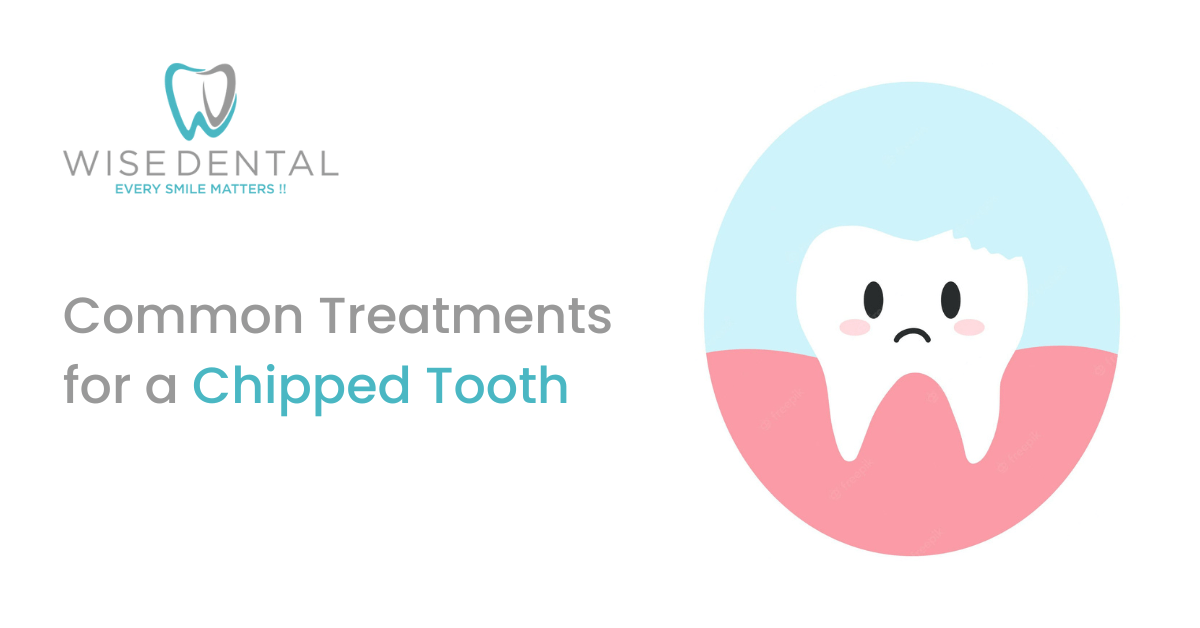Putting off treatment for allegedly minor issues like chipped and fractured teeth. But were you aware of the potential severity of these issues?
Both of these issues cannot be disregarded because they will unavoidably worsen. Continue reading as we go over the chipped tooth treatment you need to think about.
How to Care For a Chipped Tooth?
As soon as you see a chipped or broken tooth, you should schedule an appointment with a dentist. If not, it can break more easily or hurt. There are several steps you can take to take care of the tooth in the interim.
If the break has a sharp edge, it could damage your tongue and lip. Cover it with wax paraffin or sugar-free gum to prevent it. The break-formed blade will get dull as a result.
Use over-the-counter pain medication if the tooth is hurting. You can rinse your mouth with a saline solution to avoid infection. Eat only soft meals, and refrain from biting down on anything with your teeth.
Dental Fillings & Bonding
When you chip a small portion of a tooth, typically only the enamel, a filling is used. In some cases, the dentist may employ a technique called bonding for cosmetic purposes. If the fractured tooth is in the front, this resin that matches the colour of your teeth can help.
Bonding is a quick, painless treatment that doesn’t involve any anaesthesia. The shattered region will be made rougher by a liquid or gel so that an adhesive will adhere to it. After that, an ultraviolet laser is used to form and harden this bonding substance.
Reshaping
Not every cracked tooth needs to be fixed with a complicated treatment. The tooth may occasionally just need to be reshaped. Usually, only extremely few chips or cracks are capable of doing this.
It will just require one visit to reshape. It is an inexpensive and painless operation. The region will be polished and buffed by the dentist until the flaw is no longer visible.
Reattachment
It could be feasible to completely repair the tooth in rare circumstances. The shattered portion of the tooth is attached to the remaining portion with cement. Reattachment frequently yields long-term outcomes that are overwhelmingly favourable.
The surgery is inexpensive and not uncomfortable. This procedure is rarely utilised since many tooth fragments cannot be reattached. No matter what, you should visit your dentist if you still have the fragment.
Veneers For Teeth
Veneers are very thin porcelain or resin shells that match your teeth. They restore a tooth’s natural appearance by attaching to the tooth’s surface. Veneers are made of thin, light material with a thicker portion that covers the damaged area of the tooth.
Due to the dentist’s need to perfect the veneer, the operation takes a little longer than other procedures. The tooth enamel will be removed first. The veneers will then be cast from a mould that has been taken and sent away.
Veneers can be attached after being manufactured for a week or two. With etching, a liquid is used to roughen the tooth’s surface. This guarantees that the veneer is securely fastened to the cement.
The cement is then exposed to UV light to get it to solidify. You’ll have a whole new grin that is frequently much better and straighter than the one you previously had.
Root Canal Therapy
Only if the injury affects the tooth’s fragile pulp and root will root canal therapy be necessary. This can occur even after minor bumps, and an X-ray will show whether this is the case.
Many rumours surround root canal procedures. It’s true that it’s a bigger operation, and the recovery period might be difficult. This must be balanced against the possibility of losing the tooth completely, though.
The tooth can spread infection if it is not extracted. Your tooth will be healthy after the surgery is done and will be covered in a crown.
Tooth Crowns
When a significant portion of the tooth falls out or the tooth has more decayed areas than normal, dental crowns are an alternative. A cap or crown is used to replace the damaged or decayed portion of the tooth after it has been ground away. This safeguards the teeth while also enhancing their appearance.
Crowns can be made from a variety of materials, each of which has advantages and disadvantages. Although very strong, metal crowns may not be as aesthetically pleasing. However, they cost more and are a little bit weaker than porcelain crowns, which mimic a tooth more closely.
A dental procedure to attach a crown necessitates two visits. First, the tooth will be examined with an X-ray, and then the affected area will be removed. In order to make the crown, an impression will be taken and transmitted.
The crown will be cemented into place two to three weeks later. You might have received a temporary crown from one or more dentists during this time, which needs to be taken out first.
Treatment for Chipped Teeth
Now that you are aware of the primary therapy for a chipped tooth, consult a specialist. They will be far more knowledgeable about the scope of the issue and your options. It is then only a matter of scheduling the appointment.
Conclusion
Wise Dental is your first port of call in a case of chipped tooth. We offer a variety of services, from regular medical care to cosmetic surgery. Get in touch with us to discuss your requirements, and allow us to restore your smile.

